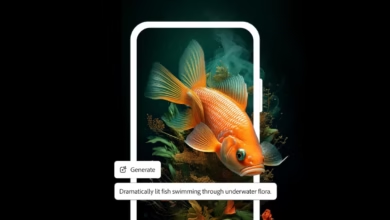Quick Reads
[Quick Read] Hands-On with AI Coding Tools: Practical Tips and Tricks

This article is part of the ‘AI in the Code Realm’ quick reads series, exploring how AI is reshaping the landscape of software development.
How to Get Started with AI Coding Assistants like Claude
- Choose the Right Tool: Start by evaluating your needs. Are you looking for general coding help, debugging, or specific language support? Tools like Claude offer comprehensive assistance, while Grok might be better for broader, creative problem-solving.
- Trial and Compare: Many AI assistants offer free trials. Use these to see which tool integrates best with your workflow, provides the most accurate suggestions, or aligns with your coding style.
- Setup and Integration:
- Installation: Follow the tool’s setup guide, whether it’s installing a plugin for your IDE or setting up an account for web-based tools.
- Integration: Ensure the AI tool integrates with your development environment. For instance, GitHub Copilot works directly in VS Code, while others might require API keys or custom setups.
- Initial Education: Spend some time with the tool’s documentation or tutorial. Understanding how to communicate effectively with the AI (e.g., what prompts work best) can significantly enhance your experience.
Best Practices for Integrating AI into Your Coding Workflow
- Use AI as a Sounding Board: Before diving into coding, use AI to brainstorm or outline your approach. It can help you think through different solutions or architectural decisions.
- Code Review: Let AI review your code for common issues or suggest optimizations before you push to a version control system. This can save time in later stages.
- Incremental Adoption: Don’t overhaul your entire workflow at once. Start by using AI for specific tasks like writing tests or documenting code, then expand as you gain confidence.
- Critical Thinking: Always evaluate AI suggestions. Understand why the AI made a particular recommendation to ensure it aligns with your project’s goals and standards.
- Customize and Learn: If your tool allows, customize AI behavior to match your coding style or project requirements. Also, learn from the AI’s suggestions to improve your own coding practices.
Tips for Maximizing Productivity Without Losing Personal Coding Skills
- Balance Automation with Learning: Use AI to automate repetitive tasks but engage with the code it generates. Try to understand how it achieved the result to enhance your own skills.
- Manual Overrides: Don’t become overly reliant on AI. Occasionally, write code from scratch to keep your coding muscles strong. Use AI more as a partner rather than a crutch.
- AI for Learning: Leverage AI to learn new languages or paradigms by asking it to demonstrate concepts or solve problems in ways you’re unfamiliar with.
- Efficiency Over Dependency: Use AI for efficiency, like auto-generating boilerplate or finding quick fixes, but ensure you’re still the architect of your code’s logic and structure.
- Documentation: Turn AI’s code generation into a learning opportunity by having it explain what it does – this can enhance your understanding and documentation skills.
- Pair Programming with AI: Treat AI as if it were another developer in pair programming, discussing solutions, debating alternatives, and refining code together.
- Keep Up-to-Date: AI tools evolve quickly. Regularly check for updates or new features that might change how you interact with your coding assistant.
- Ethical and Security Checks: Always review AI-generated code for potential security issues or ethical considerations, especially if the code will interact with sensitive data or systems.
Real-World Application
- Project Initiation: Use AI to quickly scaffold a new project, setting up the initial structure, dependencies, or even basic configurations.
- Debugging: When stuck, describe the issue to the AI, which might offer a fresh perspective or suggest debugging steps you hadn’t considered.
- Refactoring: Let AI suggest ways to refactor code for better performance, maintainability, or adherence to best practices.
- Learning New Tech: When adopting new technologies, have the AI explain concepts or generate example code, then expand from there.
- Testing: AI can generate test cases or even help in writing unit tests, which can be particularly helpful for comprehensive testing.
By integrating AI coding tools into your workflow thoughtfully, you can enhance your productivity, learn new techniques, and stay competitive in the ever-evolving landscape of software development, all while maintaining and growing your personal coding prowess.
Quick Read Series: “AI in the Code Realm”
- The Rise of AI Code Assistants: From Automation to Collaboration
- Meet Claude: The Code Whisperer
- The Silicon Giants Respond: AI Strategies of OpenAI, Google, Microsoft, and Meta
- Grok by xAI: More Than Just Code
- The Developer’s New Best Friend: How AI Enhances Coding
- Ethical AI and Coding: Navigating the Future
- The Future of Code with AI: Predictions and Trends
- Competition or Collaboration? The AI Tool Ecosystem
- Hands-On with AI Coding Tools: Practical Tips and Tricks
- Conclusion: The Coder’s New World
Topics
AI in Software Development
100%
Getting Started with AI Coding Assistants
90%
Best Practices for AI in Coding Workflow
90%
Choosing the Right AI Tool
85%
Maximizing Productivity with AI
85%
Setup and Integration of AI Tools
80%
Real-World Applications of AI in Coding
80%
Learning and Customizing AI Tools
80%
Future Trends in AI and Coding
70%






